
Roots
In the quiet hours of night, as the world settles into slumber, our textured strands embark upon their own unseen journey. We often consider the daytime rituals—the washes, the styling, the protective braids—but what happens when we surrender to rest? The surface upon which our hair reclines holds a silent, yet profound, conversation with each delicate curl and coil.
This conversation, often overlooked, whispers tales of resilience and vulnerability, of the very foundations that either uphold or challenge the integrity of our hair’s exquisite architecture. Understanding this nightly dialogue begins with a gentle exploration of the hair itself, a journey into its intrinsic nature, before external forces come into play.
The nocturnal dance between textured hair and its sleep surface significantly influences its delicate architecture.

The Delicate Architecture of a Strand
At its very heart, textured hair possesses a distinct structural elegance that sets it apart. Unlike straight strands with their circular cross-section, each curl and coil often boasts an Elliptical or Flattened Cross-Section. This unique shape, coupled with an uneven distribution of disulfide bonds along the hair shaft, dictates the characteristic twists and turns of our patterns. These very twists, while contributing to the hair’s stunning visual depth, also create points of inherent weakness.
The cuticle, the outermost protective layer of the hair, composed of overlapping scales, is more prone to lifting and becoming uneven along these curves. When this delicate structure encounters constant mechanical pressure, particularly from rough surfaces, the potential for microscopic trauma escalates. The hair’s natural oils, too, struggle to navigate these intricate pathways, leading to a tendency towards dryness, a condition that further compromises the strand’s pliability and strength.

Understanding Hair Anatomy Specific to Textured Hair
- Cuticle ❉ The outermost protective layer, resembling overlapping shingles. In textured hair, these scales can be more prone to lifting at the curves of the strand, making it vulnerable to external friction.
- Cortex ❉ The central, strength-giving layer, comprising keratin proteins. The unique distribution of bonds here dictates the curl pattern, contributing to the hair’s characteristic shape.
- Medulla ❉ The innermost core, sometimes absent in finer hair types. Its presence or absence can influence the hair’s overall resilience.
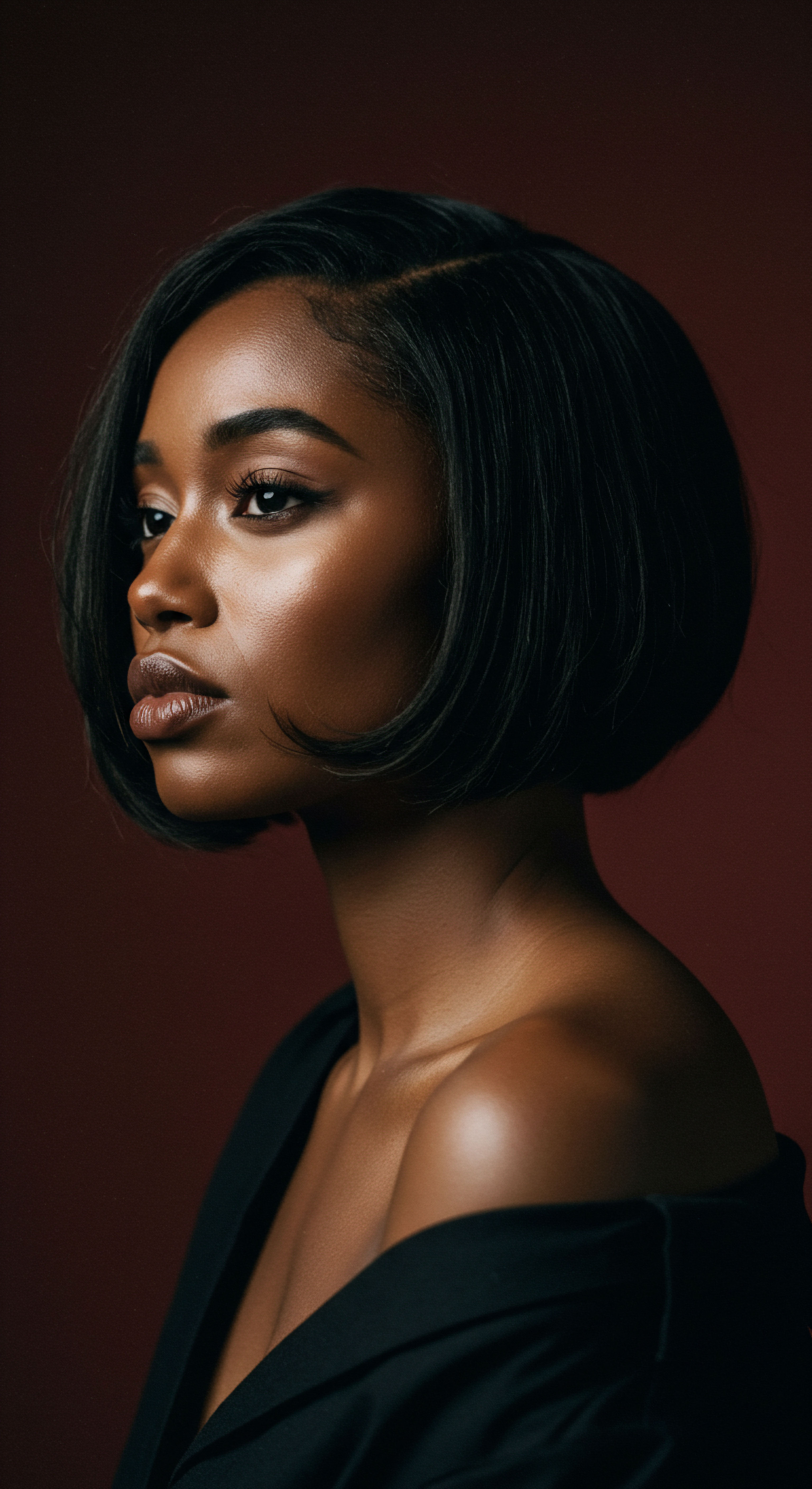
Textured Hair Classification Systems
While classification systems (like the widely recognized Andre Walker system with its 3s and 4s, or the LOIS system focusing on L-Shape, O-Shape, I-Shape, S-Shape) serve as useful guides for understanding general curl patterns, their true value extends beyond mere categorization. They speak to the inherent structural variations that influence a strand’s predisposition to certain challenges. A tightly coiled strand, for instance, with its numerous bends and turns, presents more opportunities for friction points against a sleep surface than a looser wave. These classifications are not rigid boxes, but rather descriptive frameworks that help us anticipate the unique needs and vulnerabilities of our individual hair textures, particularly when it comes to mechanical stress.

The Essential Lexicon of Textured Hair
To truly comprehend the interaction between hair and sleep surfaces, a shared understanding of key terms becomes indispensable. Beyond curl pattern, concepts like porosity, elasticity, and density play a pivotal role in determining a strand’s susceptibility to breakage. Porosity refers to the hair’s ability to absorb and retain moisture; high porosity hair, with its more open cuticles, is often more vulnerable to moisture loss and subsequent brittleness, making it more prone to friction damage. Elasticity speaks to the hair’s stretch and return capability; strands lacking good elasticity are less resilient and more likely to snap under pressure.
Density, the number of individual strands on the scalp, influences the overall bulk and how easily hair can become matted or tangled during sleep. These characteristics, working in concert, dictate how a strand will respond to the nightly embrace of a pillow.
| Property Porosity |
| Description Hair's ability to absorb and hold moisture. |
| Relevance to Sleep Surface Impact High porosity hair loses moisture quickly, becoming dry and brittle, thus more susceptible to friction damage. |
| Property Elasticity |
| Description Hair's ability to stretch and return to its original state. |
| Relevance to Sleep Surface Impact Low elasticity hair is less resilient to pulling and snagging, increasing breakage risk on rough surfaces. |
| Property Density |
| Description Number of hair strands per square inch on the scalp. |
| Relevance to Sleep Surface Impact Higher density can lead to more tangling and matting during sleep if not properly protected, increasing friction points. |
| Property Understanding these intrinsic hair qualities helps tailor nighttime protection strategies. |

Ritual
As dusk settles and the world prepares for slumber, a quiet, deliberate ritual unfolds for those who honor their textured strands. Moving beyond the intrinsic nature of the hair itself, we now step into the realm of applied wisdom—the conscious choices and gentle practices that transform the nightly repose from a potential site of stress into a sanctuary of preservation. This shift acknowledges that while our hair possesses its own unique blueprint, our actions, particularly as we prepare for rest, hold immense sway over its well-being. It is here, in the tender acts of preparation and protection, that we find the true art of minimizing the unseen wear and tear of the night.
Conscious nighttime practices transform sleep into a period of hair preservation.
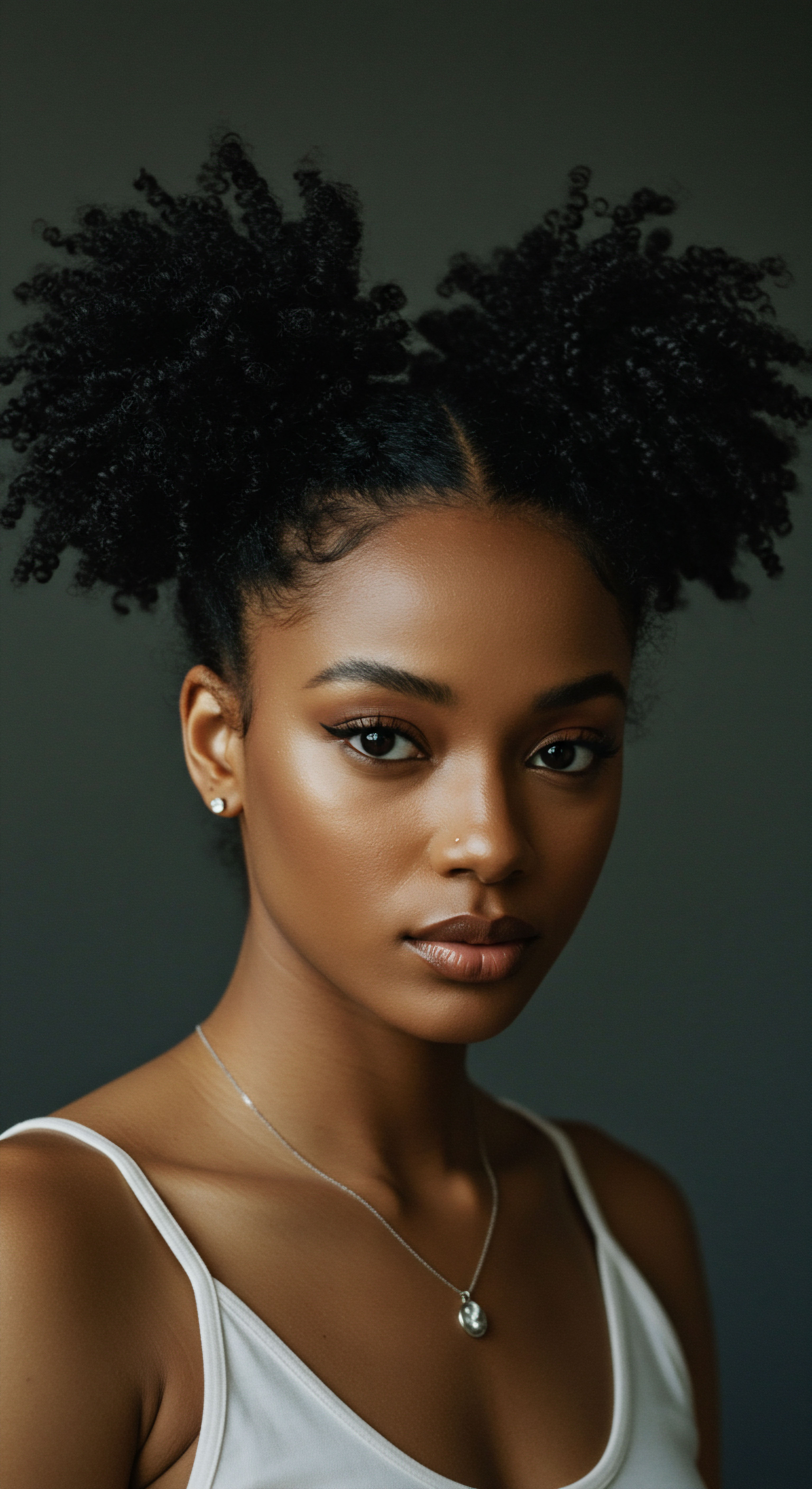
The Nighttime Sanctuary ❉ Essential Sleep Protection
The tradition of covering hair for sleep spans generations and cultures, a testament to its enduring wisdom. From the intricately tied headwraps of ancestral practices to the modern bonnet, this ritual serves a singular, profound purpose ❉ to create a protective barrier between delicate strands and the world, especially during sleep. A Silk or Satin Bonnet, for instance, acts as a soft cocoon, holding the hair gently in place, minimizing movement, and most importantly, reducing direct contact with abrasive pillowcases.
This simple act safeguards the hair’s moisture content, preventing the pillow from drawing out essential hydration, and dramatically lessens the friction that leads to raised cuticles and subsequent breakage. The choice of material for this nightly guardian is paramount.
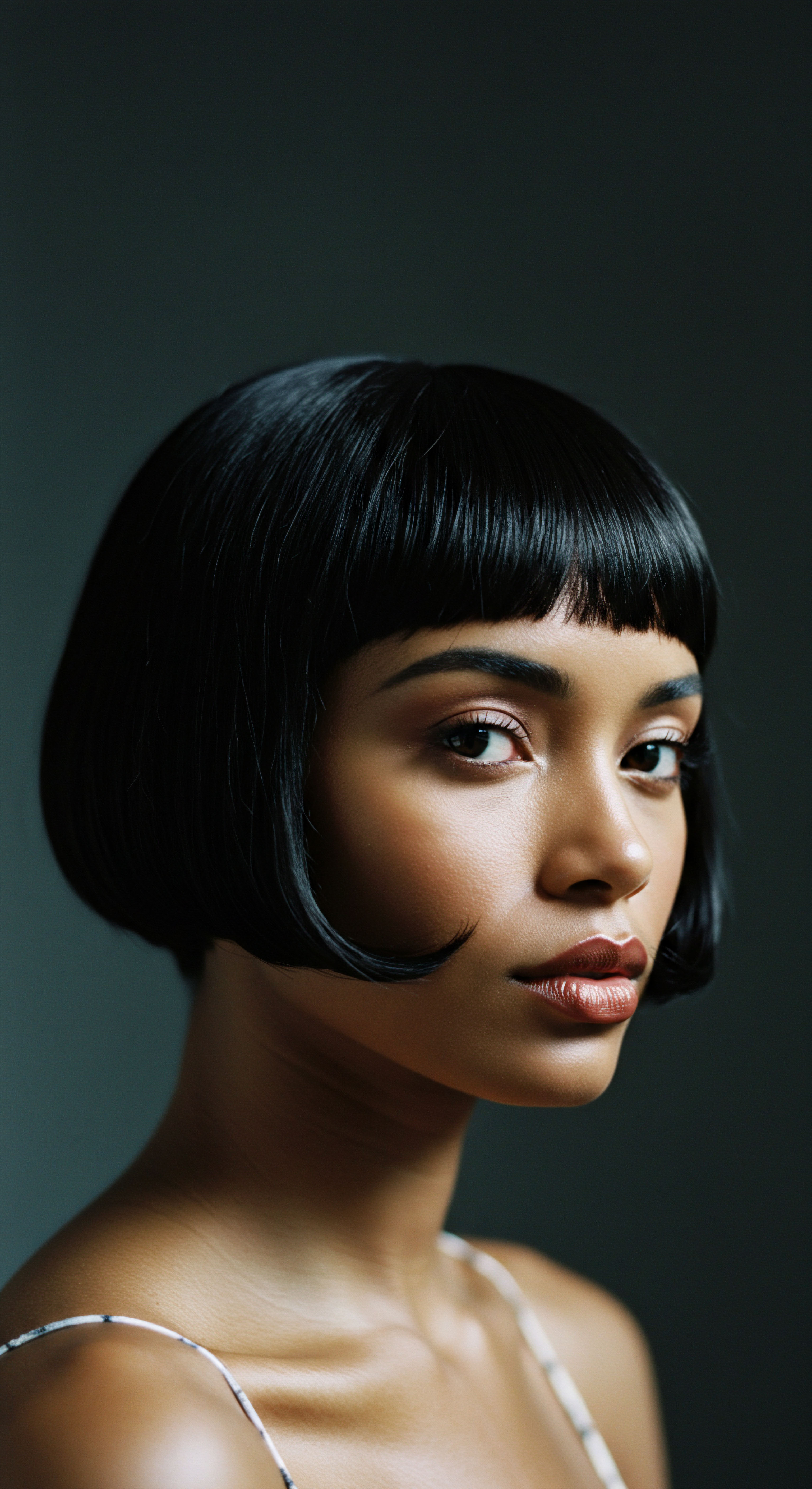
Understanding Fabric’s Whisper ❉ Silk, Satin, and the Cotton Conundrum
The very fibers of our sleep surfaces engage in an intimate dialogue with our hair. Cotton, a common pillowcase material, is known for its absorbency and short, coarse fibers. While wonderful for towels, this thirsty nature means cotton readily draws moisture from hair, leaving it dry and more susceptible to damage. Its rough surface creates microscopic snags and friction points with every turn of the head, causing the delicate cuticle scales to lift, leading to frizz and eventual breakage.
In stark contrast, silk and satin offer a smoother, less abrasive environment. Silk, a natural protein fiber, boasts a smooth surface and tightly woven structure that allows hair to glide effortlessly, minimizing friction. Its inherent moisture-retaining properties mean it doesn’t strip hair of its natural hydration. Satin, while often made from synthetic fibers like polyester, mimics silk’s smooth surface through its specific weave.
The key distinction lies in the weave, not necessarily the fiber itself. A well-constructed satin weave provides a similar low-friction surface, making it an accessible alternative to natural silk. The smooth, uninterrupted surface of these materials allows hair to move freely, reducing the mechanical stress that can compromise the integrity of the hair shaft.
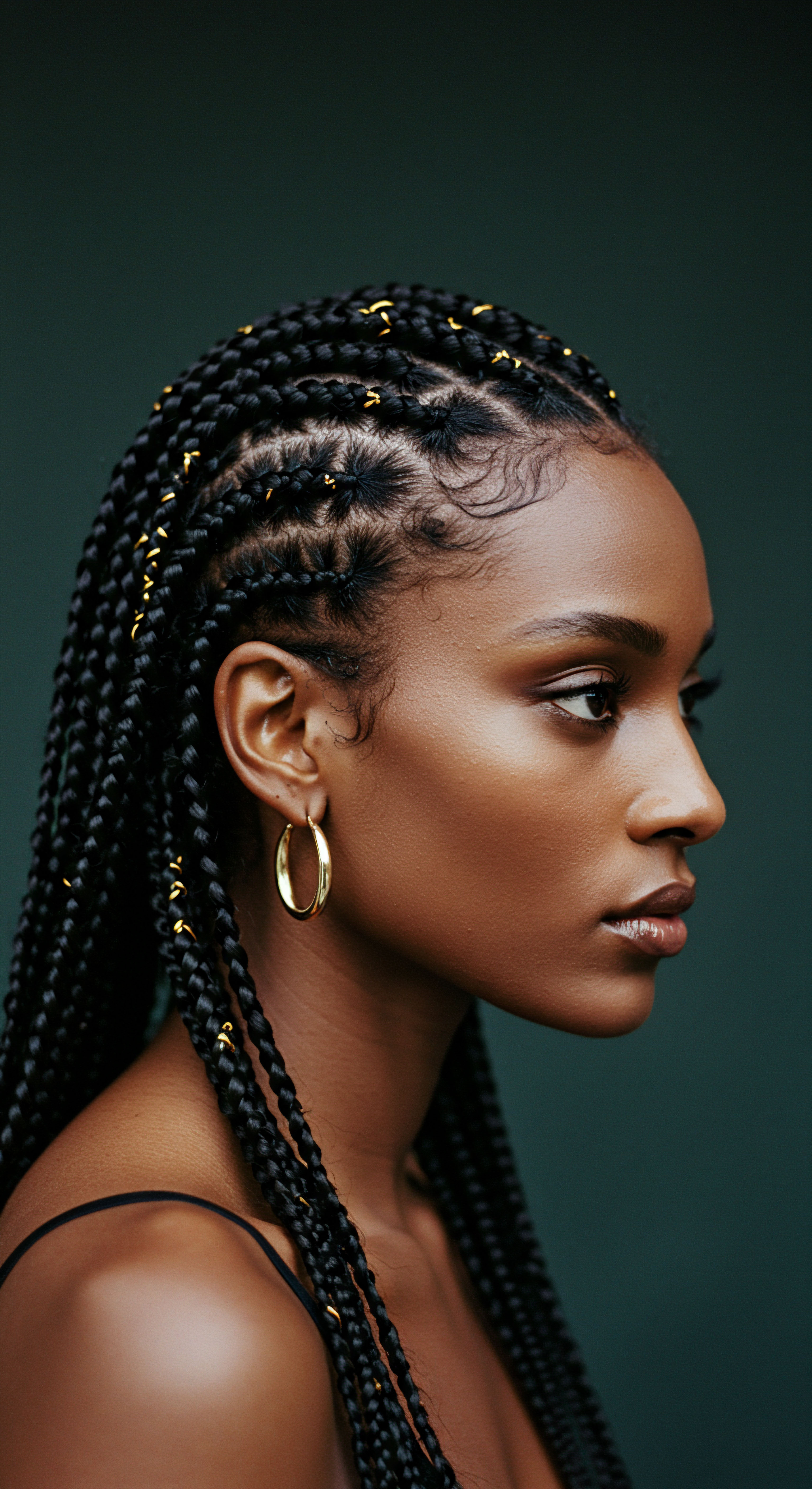
Beyond the Pillowcase ❉ Considering Sleep Styles and Positions
While the sleep surface is a primary player, how we position our hair during rest also holds considerable sway. Sleeping on the stomach or with hair splayed beneath the head can significantly increase direct contact and compression, leading to more concentrated friction points. A more protective approach involves sleeping on one’s back, or, for those who prefer side sleeping, carefully positioning hair to minimize direct contact with the pillow.
Loosely gathering hair into a “pineapple” Style atop the head, or securing it in a few loose braids or twists, can further elevate the hair off the pillow, reducing friction and preserving curl definition. These mindful adjustments complement the protective barrier of a bonnet or silk pillowcase, working in concert to create an optimal environment for nightly hair restoration.

Preparing Strands for Slumber
The journey to protected hair at night often begins before the head even meets the pillow. A simple pre-sleep routine can dramatically reduce breakage.
- Moisturize ❉ Apply a light leave-in conditioner or hair oil to replenish moisture lost throughout the day, ensuring strands are pliable and less prone to snapping.
- Detangle Gently ❉ Use fingers or a wide-tooth comb to remove any tangles from the day, starting from the ends and working upwards. This prevents knots from tightening during sleep.
- Style for Protection ❉ Create loose protective styles such as a Single Large Braid, a few chunky twists, or a “pineapple” (a high, loose ponytail or bun) to keep hair contained and minimize friction against the sleep surface. Avoid tight styles that could cause tension on the scalp or strands.

Relay
Having traversed the foundational understanding of textured hair and the practical wisdom of nighttime rituals, we now step onto a broader stage, where the intricate interplay of science, cultural heritage, and nuanced data converges. This is where we transcend the immediate, personal experience and delve into the deeper currents that shape our hair’s nightly vulnerability and resilience. Here, the subtle mechanics of friction meet the enduring legacies of care, painting a more complete picture of how sleep surfaces truly influence the very fiber of our textured strands. It is a space where empirical observation meets the quiet strength of tradition, offering a profound appreciation for the hair’s enduring journey.
The impact of sleep surfaces on textured hair breakage is a complex interplay of scientific principles and cultural practices.

The Science of Friction ❉ Microscopic Trauma Unveiled
At the heart of sleep surface impact lies the relentless force of friction. Every shift, every turn of the head, creates a microscopic tug-of-war between the hair strand and the pillowcase. For textured hair, with its naturally raised cuticle scales and numerous points of curvature, this battle is particularly pronounced. When hair rubs against a rough surface, the friction generates mechanical stress that lifts and abrades the cuticle layers.
This lifting exposes the inner cortex, making the hair more susceptible to moisture loss and, critically, to physical damage. Over time, this cumulative abrasion weakens the hair shaft, leading to thinning, split ends, and ultimately, breakage. The smoother the surface, the less resistance the hair encounters, allowing it to glide rather than snag, thus preserving its structural integrity.

A Quantitative Gaze ❉ Data on Surface Impact
While the anecdotal evidence of smoother pillowcases benefiting hair is widespread, scientific inquiry provides a deeper lens. Research into the tribological properties of hair, particularly its friction against various textiles, offers compelling insights. For instance, studies on the coefficient of friction between human hair and different fabric types consistently show that Silk Exhibits a Significantly Lower Friction Coefficient compared to cotton. In a chapter from the comprehensive text, “Cosmetic Science and Technology ❉ Theoretical and Applied Aspects of Hair Care,” J.
D. Robbins discusses the various factors affecting hair friction, emphasizing how the surface characteristics of a material directly influence the degree of mechanical stress imparted upon the hair fiber. This fundamental principle underscores why materials like silk and satin, with their smooth, tightly woven surfaces, are superior for hair protection during sleep. The reduced friction means less mechanical wear and tear on the hair’s delicate cuticle, minimizing the lifting and eventual erosion that precipitates breakage, especially for the inherently more fragile structure of textured hair. This is not merely a matter of comfort; it is a measurable difference in the physical forces exerted upon each strand.

Cultural Continuities ❉ Ancient Wisdom Meets Modern Science
The practice of protecting hair during sleep is not a modern invention; it is a thread woven through the rich tapestry of human history and cultural heritage, particularly within communities with textured hair. Across various African and diasporic cultures, headwraps, scarves, and intricate braiding patterns have long served as both adornment and protection. These traditions, passed down through generations, intuitively understood the need to shield delicate strands from environmental aggressors, including the nightly friction of sleep surfaces. The modern satin bonnet, while a contemporary iteration, stands as a direct descendant of this ancient wisdom.
It represents a continuity of care, where practices born of necessity and cultural significance find validation in contemporary scientific understanding of hair biology and mechanics. This blending of ancestral knowledge with scientific validation offers a holistic perspective on hair wellness.

The Trichologist’s Lens ❉ Beyond the Surface
From the perspective of a trichologist, a specialist in hair and scalp health, the impact of sleep surfaces extends beyond simple mechanical breakage. They often consider the cumulative effect of seemingly minor stressors. Chronic friction from a rough pillowcase can contribute to conditions like Traction Alopecia along the hairline, particularly if hair is habitually pulled taut during sleep. Furthermore, the constant absorption of natural oils by cotton surfaces can exacerbate scalp dryness, potentially leading to flaking or irritation.
A trichologist might also observe that individuals already experiencing hair thinning or compromised hair health (due to diet, stress, or underlying conditions) are even more susceptible to the negative effects of inadequate sleep protection. Their guidance would invariably include recommendations for low-friction sleep surfaces as a foundational element of a comprehensive hair care regimen, acknowledging its role in the broader ecosystem of hair and scalp wellness.
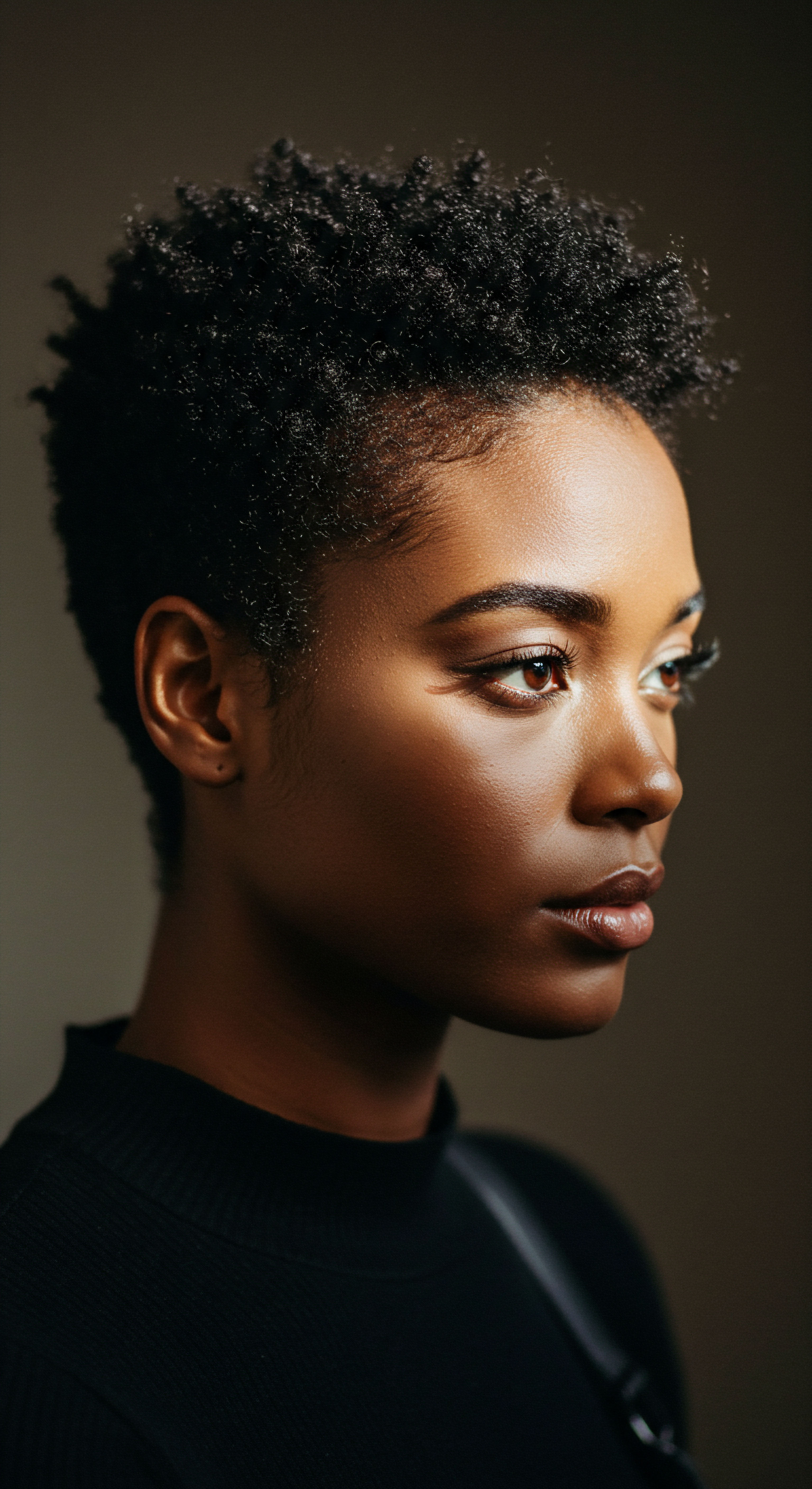
How do Environmental Factors and Sleep Surfaces Interact to Affect Textured Hair?
The interaction between environmental factors and sleep surfaces creates a complex dynamic for textured hair. Humidity levels, for instance, play a significant role. In dry environments, hair is more prone to moisture loss, making it brittle and more susceptible to friction damage from a rough pillowcase. Conversely, high humidity can cause hair to swell and become more elastic, but still vulnerable to tangling and subsequent breakage if not protected.
Pollution, too, can deposit particulate matter on hair, increasing surface roughness and potentially exacerbating the abrasive effects of a cotton pillowcase. Therefore, the impact of sleep surfaces is not isolated; it is deeply interconnected with the ambient conditions that influence the hair’s overall health and resilience.

Reflection
As the last light of day yields to the quiet embrace of night, we are reminded that the journey of textured hair is one of constant discovery and gentle attentiveness. From the intricate spirals that define its very being to the thoughtful rituals that shield it during slumber, each aspect speaks to a profound connection—a heritage of beauty, a science of resilience, and a personal narrative of care. The seemingly simple choice of a sleep surface unfolds into a deeper understanding of protection, a quiet act of honoring the strands that adorn us. In this nightly dance between hair and fabric, we find not just a lesson in preservation, but a celebration of textured hair’s inherent grace, inviting us to approach its care with a quiet knowing, a gentle touch, and an enduring sense of reverence.
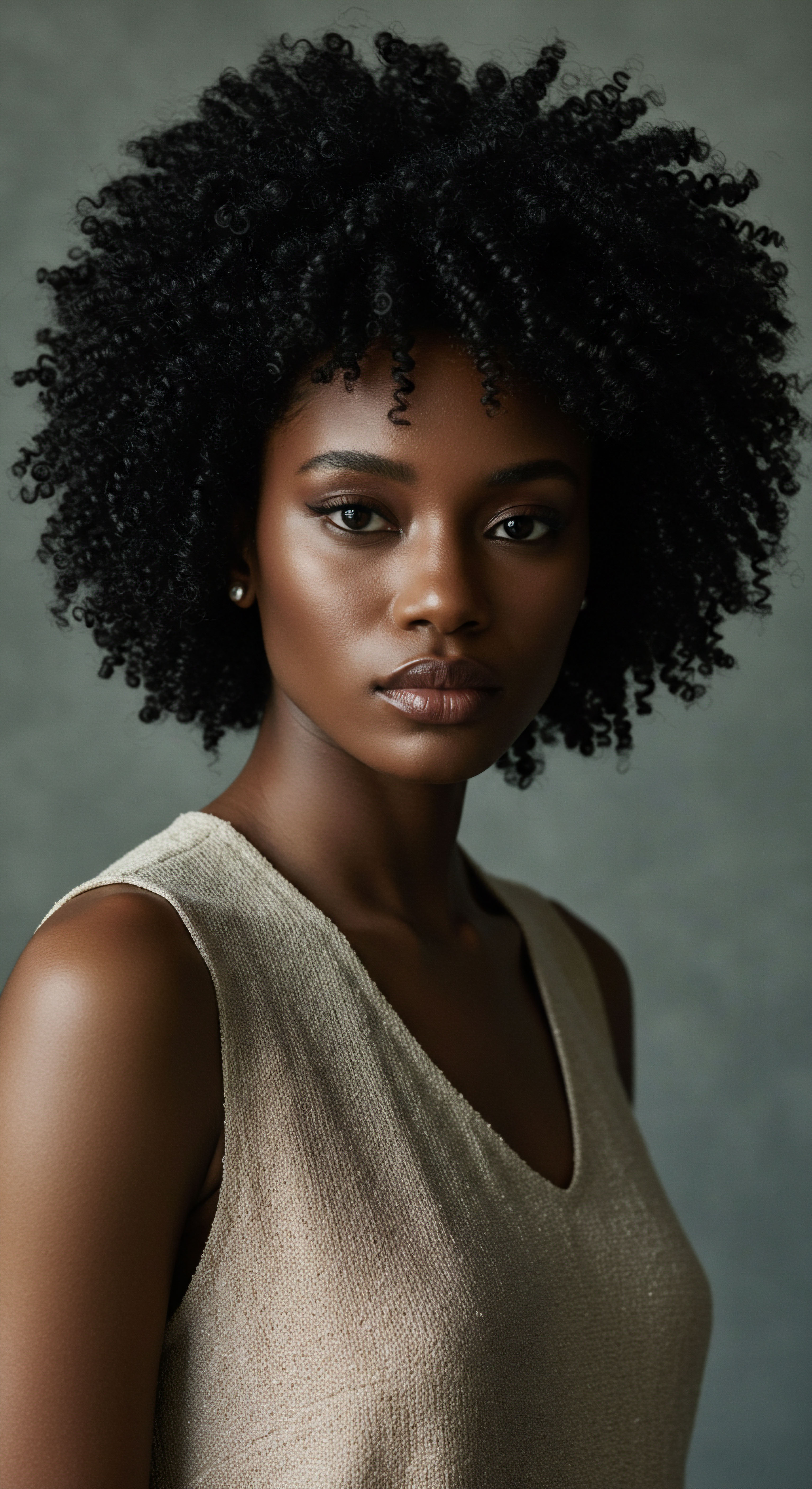
References
- Robbins, J. D. (2017). Frictional Properties of Hair Fibers. In K. Schrader & A. Domsch (Eds.), Cosmetic Science and Technology ❉ Theoretical and Applied Aspects of Hair Care (pp. 305-320). CRC Press.
- Robbins, C. R. (2012). Chemical and Physical Behavior of Human Hair (5th ed.). Springer.
- Bouillon, C. & Wilkinson, J. B. (Eds.). (2005). The Science of Hair Care (2nd ed.). CRC Press.
- Wolfram, L. J. & Robbins, C. R. (1981). Hair ❉ The Physical and Chemical Properties. Academic Press.
- Khumalo, N. P. & Gumedze, F. (2019). Hair Loss ❉ The Complete Guide to Hair Loss in Women, Men and Children. Juta and Company Ltd.
- Franbourg, A. Hallegot, P. Baltenneck, F. Freyssinet, J. M. & Bouloc, A. (2003). Current research on ethnic hair. Journal of the American Academy of Dermatology, 48(6), S115-S119.
- Gavazzoni, M. F. & Panzica, L. (2020). Trichology and Hair Transplantation ❉ An Atlas of Diseases and Treatment. Springer.